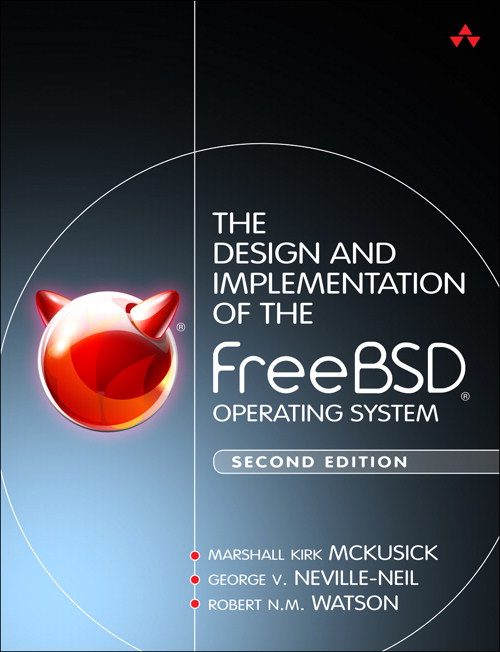
Now available: The Design and Implementation of the FreeBSD Operating System (Second Edition)
[ source navigation ] [ diff markup ] [ identifier search ] [ freetext search ] [ file search ] [ list types ] [ track identifier ]
FreeBSD/Linux Kernel Cross Reference
sys/Documentation/serial-console.txt
Version:
- FREEBSD - FREEBSD-13-STABLE - FREEBSD-13-0 - FREEBSD-12-STABLE - FREEBSD-12-0 - FREEBSD-11-STABLE - FREEBSD-11-0 - FREEBSD-10-STABLE - FREEBSD-10-0 - FREEBSD-9-STABLE - FREEBSD-9-0 - FREEBSD-8-STABLE - FREEBSD-8-0 - FREEBSD-7-STABLE - FREEBSD-7-0 - FREEBSD-6-STABLE - FREEBSD-6-0 - FREEBSD-5-STABLE - FREEBSD-5-0 - FREEBSD-4-STABLE - FREEBSD-3-STABLE - FREEBSD22 - l41 - OPENBSD - linux-2.6 - MK84 - PLAN9 - xnu-8792
SearchContext: - none - 3 - 10
SearchContext: - none - 3 - 10
1 Linux Serial Console 2 3 To use a serial port as console you need to compile the support into your 4 kernel - by default it is not compiled in. For PC style serial ports 5 it's the config option next to "Standard/generic (dumb) serial support". 6 You must compile serial support into the kernel and not as a module. 7 8 It is possible to specify multiple devices for console output. You can 9 define a new kernel command line option to select which device(s) to 10 use for console output. 11 12 The format of this option is: 13 14 console=device,options 15 16 device: tty0 for the foreground virtual console 17 ttyX for any other virtual console 18 ttySx for a serial port 19 lp0 for the first parallel port 20 ttyUSB0 for the first USB serial device 21 22 options: depend on the driver. For the serial port this 23 defines the baudrate/parity/bits/flow control of 24 the port, in the format BBBBPNF, where BBBB is the 25 speed, P is parity (n/o/e), N is number of bits, 26 and F is flow control ('r' for RTS). Default is 27 9600n8. The maximum baudrate is 115200. 28 29 You can specify multiple console= options on the kernel command line. 30 Output will appear on all of them. The last device will be used when 31 you open /dev/console. So, for example: 32 33 console=ttyS1,9600 console=tty0 34 35 defines that opening /dev/console will get you the current foreground 36 virtual console, and kernel messages will appear on both the VGA 37 console and the 2nd serial port (ttyS1 or COM2) at 9600 baud. 38 39 Note that you can only define one console per device type (serial, video). 40 41 If no console device is specified, the first device found capable of 42 acting as a system console will be used. At this time, the system 43 first looks for a VGA card and then for a serial port. So if you don't 44 have a VGA card in your system the first serial port will automatically 45 become the console. 46 47 You will need to create a new device to use /dev/console. The official 48 /dev/console is now character device 5,1. 49 50 (You can also use a network device as a console. See 51 Documentation/networking/netconsole.txt for information on that.) 52 53 Here's an example that will use /dev/ttyS1 (COM2) as the console. 54 Replace the sample values as needed. 55 56 1. Create /dev/console (real console) and /dev/tty0 (master virtual 57 console): 58 59 cd /dev 60 rm -f console tty0 61 mknod -m 622 console c 5 1 62 mknod -m 622 tty0 c 4 0 63 64 2. LILO can also take input from a serial device. This is a very 65 useful option. To tell LILO to use the serial port: 66 In lilo.conf (global section): 67 68 serial = 1,9600n8 (ttyS1, 9600 bd, no parity, 8 bits) 69 70 3. Adjust to kernel flags for the new kernel, 71 again in lilo.conf (kernel section) 72 73 append = "console=ttyS1,9600" 74 75 4. Make sure a getty runs on the serial port so that you can login to 76 it once the system is done booting. This is done by adding a line 77 like this to /etc/inittab (exact syntax depends on your getty): 78 79 S1:23:respawn:/sbin/getty -L ttyS1 9600 vt100 80 81 5. Init and /etc/ioctl.save 82 83 Sysvinit remembers its stty settings in a file in /etc, called 84 `/etc/ioctl.save'. REMOVE THIS FILE before using the serial 85 console for the first time, because otherwise init will probably 86 set the baudrate to 38400 (baudrate of the virtual console). 87 88 6. /dev/console and X 89 Programs that want to do something with the virtual console usually 90 open /dev/console. If you have created the new /dev/console device, 91 and your console is NOT the virtual console some programs will fail. 92 Those are programs that want to access the VT interface, and use 93 /dev/console instead of /dev/tty0. Some of those programs are: 94 95 Xfree86, svgalib, gpm, SVGATextMode 96 97 It should be fixed in modern versions of these programs though. 98 99 Note that if you boot without a console= option (or with 100 console=/dev/tty0), /dev/console is the same as /dev/tty0. In that 101 case everything will still work. 102 103 7. Thanks 104 105 Thanks to Geert Uytterhoeven <geert@linux-m68k.org> 106 for porting the patches from 2.1.4x to 2.1.6x for taking care of 107 the integration of these patches into m68k, ppc and alpha. 108 109 Miquel van Smoorenburg <miquels@cistron.nl>, 11-Jun-2000
Cache object: 11a58dc4b66f1d55bc82187243d5b08c
[ source navigation ] [ diff markup ] [ identifier search ] [ freetext search ] [ file search ] [ list types ] [ track identifier ]